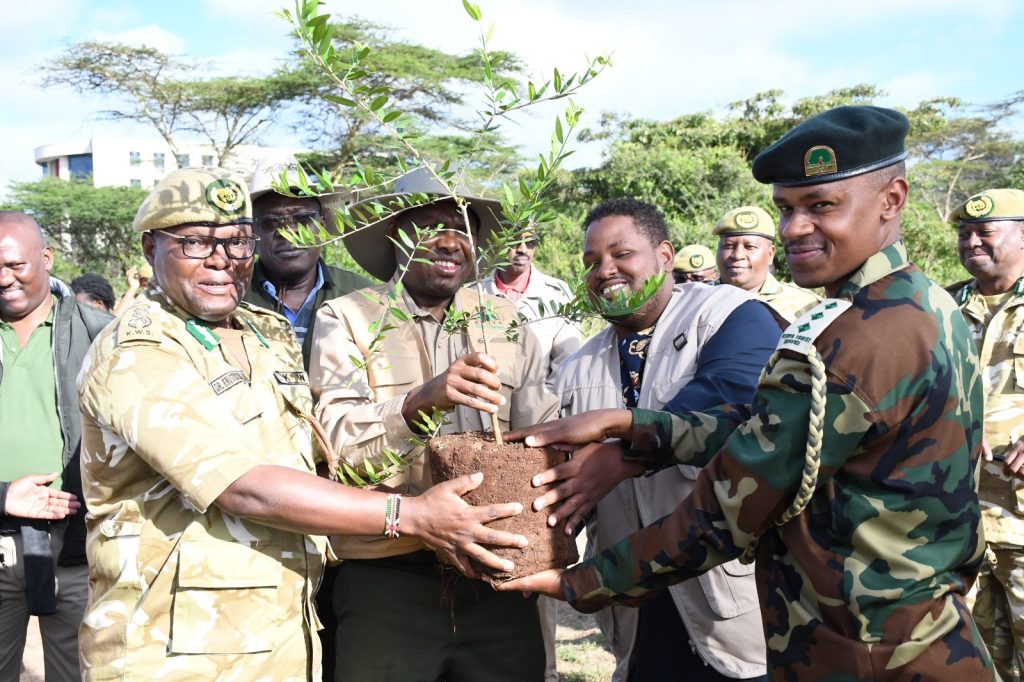Kenya Government Launches Ambitious Tree Planting Initiative at Nairobi National Park

In a concerted effort to combat climate change, conserve water resources, and preserve wildlife habitats, the Director General of Kenya Wildlife Service (KWS), Dr. Erustus Kanga, spearheaded a tree planting event at Nairobi National Park. Joined by KWS Board Member Mr. Peter Moll and dedicated staff, they welcomed the Head of Public Service, Mr. Felix Koskei, to mark the commencement of a monumental environmental restoration initiative.
Mr. Koskei unveiled the government’s ambitious plan to plant 15 billion trees over the course of a decade, aiming to plant 1.5 billion trees annually. The significance of this endeavor was underscored as 3000 Acacia tree seedlings were ceremoniously planted today within the confines of Nairobi National Park.
Nairobi National Park, a cherished ecosystem for residents of Kenya’s capital, is renowned for its rich biodiversity and critical role in wildlife conservation. Recognizing its pivotal importance, the tree planting exercise serves as a testament to Kenya’s commitment to sustainable environmental stewardship.
Speaking at the event, Mr. Koskei emphasized the urgent need for environmental restoration and the vital role that tree planting plays in securing a healthier and more resilient environment for future generations. He highlighted the multifaceted benefits of increasing forest cover, including mitigating climate change impacts, safeguarding water sources, and providing vital habitats for wildlife.
The collaborative efforts between government officials, conservationists, and local communities exemplify a united front in addressing pressing environmental challenges. Beyond mere symbolism, the tree planting initiative signifies a tangible step towards realizing Kenya’s vision of a greener and more sustainable future.
As the nation sets its sights on achieving ambitious tree planting targets, the momentum generated by today’s event underscores the collective determination to safeguard Kenya’s natural heritage and ensure a legacy of environmental stewardship for generations to come.





